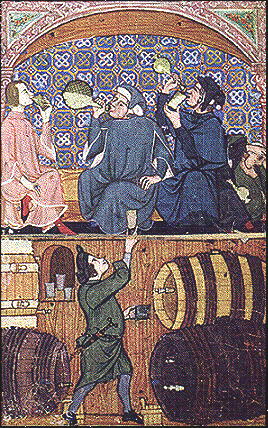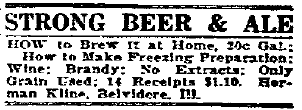In the days leading up to June 30th confusion reigned. The Wartime Prohibition Act was hastily drawn up. The perimeters of the new law were poorly defined. Many believed President Wilson would negate the Act altogether and that the scope of the law didn't include beer or light wine. Others seemed to realize exactly what was coming down. The Oshkosh Wine and Liquor Company took out a series of ads in the Northwestern notifying its customers that they were selling off their stock. “This is your last chance,” was their sober warning. Oshkosh’s three large breweries, Oshkosh Brewing, Peoples and Rahr’s, abruptly halted brewing operations and discontinued advertising their products. And the Elk’s Club announced they’d march a funeral procession down Main Street for John Barleycorn where the “Final disposition of all worldly effects of the deceased will be made.”
 |
| From June 26, 1919 |
 |
| June 28, 1919 |
The next day many of Oshkosh’s saloons opened once again... to sell soft drinks. At least, that was their story. Though July 1st would make it illegal, beer and liquor were never hard to come by in Oshkosh. The trade went underground. As the Northwestern put it in an editorial the day before the lid went down, many “will probably find ways and means to keep in the swim.” They were never more right.
































